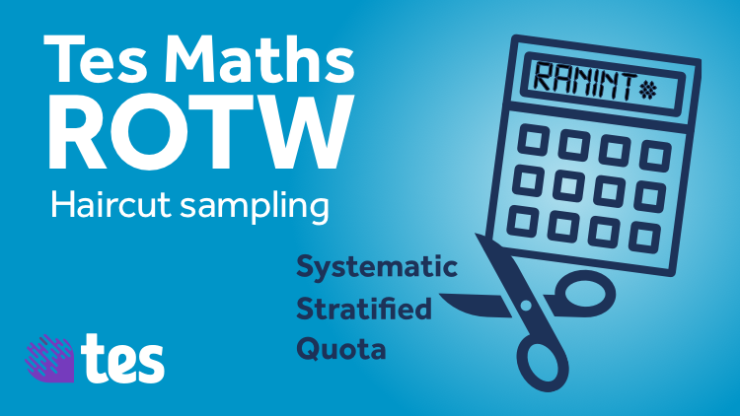To see all of the work I do for TES Maths, including Resource of the Week, Inspect the Spec, Pedagogy Place, Maths Newsletters and Topic Collections, please visit the TES Maths Blog here
What is it?
As many teachers will know, we are the second year in to a brand new A Level maths specification. One of the major change is that there is now no longer any way for students (and teachers!) to avoid doing Statistics. Now, as a stats lover myself, I have to conclude that is a very good thing, but it does mean that many teachers will need to upskill and resource-load to ensure they and their students are ready.
Fortunately, there are a whole host of wonderful A Level Statistics resources on TES to help out, and this is one of my favourites. It takes the potentially dull and confusing topic of sampling, and transforms it into a fun and ultimately useful matching activity. Students are presented with a series of steps to complete 5 different sampling methods set around the context of a new haircut, and challenge them to sort them into their respective groups and then assemble the steps into a logical order. Headscrachnig and fruitful discussion should ensue.
How can it be used?
I would be tempted to use this as a paired activity. Good matching tasks naturally prompt great conversations between students as they share their thoughts and questions, and justify their decisions. There is always the danger that one person dominates, so maybe spells or students working on their own could be woven in: 2 minutes on your own, 2 minutes together, and repeat.
There is also the likelihood the students will struggle to get started. Being presented with a load of cards can be daunting. Hence, I will once again suggest my Counter of Hope! Allocating each pair a couple of counters (the number will depend on the class) which they can exchange for hints, just gives students the opportunity to access a helping hand at key times, whilst avoiding the trap of providing help any time they can’t be bothered thinking. This help might be to tell them which group a specific card belongs in, or to tell them which card comes first out of two cards. That should be enough to get them back on track.
A final point to make is that because this resource is in Word form as well as pdf, it can be edited. This is great news for GCSE teachers, as it means the activity can be adapted to make it suitable for Year 10s and Year 11s. Remove any sampling methods that are not relevant, write a set of cards for the classic Capture-Recapture method, and you are good to go!
I really love this resource, and can see the structure of it being used with lots of different areas of Statistics, and maths as a whole.
Thanks so much for sharing
Craig Barton
Download: Haircut sampling matching task
View the author’s other resources
